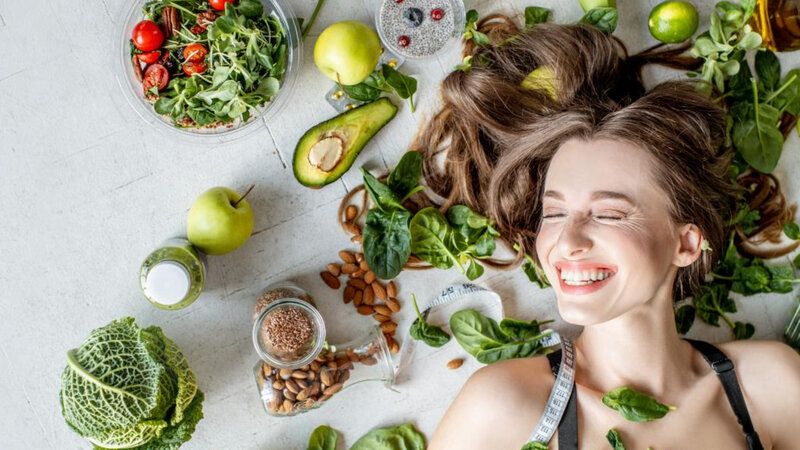Top 12 High-Protein Vegetarian Foods in India
Are you a vegetarian looking for ways to incorporate more protein into your diet? Look no further! India, with its rich culinary traditions and diverse range of plant-based ingredients, offers a plethora of high-protein options for vegetarians. In this article, we will explore some of the top high-protein vegetarian foods in India that can help you meet your protein needs while enjoying delicious and nutritious meals. A vegetarian diet can provide numerous health benefits, but it’s important to ensure an adequate intake of protein, a vital macronutrient that plays a crucial role in building and repairing tissues, supporting immune function, and maintaining overall health.
A vegetarian diet can provide numerous health benefits, but it’s important to ensure an adequate intake of protein, a vital macronutrient that plays a crucial role in building and repairing tissues, supporting immune function, and maintaining overall health.
While meat and fish are typically high in protein, there are plenty of plant-based alternatives that can fulfill your protein requirements.
The Importance of Protein in a Vegetarian Diet
Protein is composed of amino acids, which are the building blocks of our body. Vegetarians, who exclude meat, fish, and poultry from their diet, need to pay extra attention to protein consumption. Insufficient protein intake can lead to muscle loss, weakened immune function, and impaired growth and development, especially in children.
Including a variety of high-protein vegetarian foods in your meals can help meet your body’s protein needs and ensure optimal health. Let’s explore some of these protein-rich options.
1. Lentils and Legumes: Powerhouses of Protein
Lentils and legumes, such as chickpeas, black beans, and kidney beans, are excellent sources of plant-based protein. They are also rich in fiber, vitamins, and minerals. Lentils, in particular, are a staple in Indian cuisine and can be cooked in various delicious ways, including soups, stews, and curries.
2. Paneer: The Protein-Rich Indian Cheese
Paneer, a type of Indian cheese, is a popular ingredient in many vegetarian dishes. Made from curdled milk, paneer is not only rich in protein but also provides essential minerals like calcium and phosphorus. It can be added to curries, salads, or grilled for a protein-packed meal.
3. Quinoa: The Complete Protein Grain
Quinoa is a complete protein grain that originated in South America but has gained popularity in India and worldwide due to its high nutritional value. Packed with all nine essential amino acids, quinoa offers a complete protein profile. It can be used as a base for salads, substituted for rice, or added to soups and stews.
4. Nuts and Seeds: Tiny Packages of Protein
Nuts and seeds, such as almonds, walnuts, chia seeds, and flaxseeds, are not only rich in healthy fats but also provide a good amount of protein. These make for great snacks and can be added to smoothies, cereals, or homemade energy bars for an extra protein boost.
5. Greek Yogurt: Creamy and Protein-Packed
Greek yogurt, known for its creamy texture and tangy taste, is a protein powerhouse. It contains more protein compared to regular yogurt and is also a good source of calcium. Enjoy it on its own, use it as a topping, or include it in smoothies and desserts for a delicious protein-rich treat.
6. Tofu: Versatile and Protein-Rich
Tofu, made from soy milk, is a versatile ingredient widely used in vegetarian and vegan cooking. It is an excellent source of protein and also provides essential minerals like iron and calcium. Tofu can be stir-fried, grilled, or added to curries, salads, and sandwiches for a protein-packed meal.
7. Spirulina: The Superfood Algae
Spirulina, a type of blue-green algae, is a nutrient-dense superfood that offers a concentrated source of protein, vitamins, and minerals. It is available in powdered form and can be added to smoothies or used as a supplement for an extra protein boost.
8. Amaranth: A Protein-Rich Ancient Grain
Amaranth is an ancient grain that has been cultivated in India for centuries. It is gluten-free and packed with protein, fiber, and micronutrients. Amaranth can be used to make porridge, added to soups, or used as a substitute for rice or wheat flour in various recipes.
9. Cottage Cheese (Chenna): A Protein-Packed Delight
Cottage cheese, also known as chenna, is a popular dairy product in India. It is low in fat and high in protein, making it an excellent choice for vegetarians. Chenna can be used in desserts like Sandesh Mishti and rasgulla or added to savory dishes like curries and salads.
10. Peas: Small but Mighty Protein Source
Green peas, commonly used in Indian cuisine, are not only delicious but also a good source of protein. They are also rich in fiber, vitamins, and minerals. Peas can be added to curries, and rice dishes, or used as a filling for savory pastries like samosas.
11. Soy Milk: Plant-Based Protein Beverage
Soy milk, derived from soybeans, is a popular plant-based alternative to cow’s milk. It is fortified with protein and other essential nutrients. Enjoy soy milk on its own, use it in coffee or tea, or incorporate it into smoothies and shakes for a protein-rich beverage.
12. Buckwheat: Nutritious and Protein-Dense
Buckwheat is a gluten-free grain that is often used as a substitute for wheat flour in various dishes. It is rich in protein, fiber, and minerals like manganese and magnesium. Buckwheat can be used to make pancakes, noodles, or porridge for a nutritious and protein-packed meal.
Conclusion
Incorporating high-protein vegetarian foods into your diet is essential for meeting your body’s protein requirements. With the diverse range of plant-based ingredients available in India, there are plenty of options to choose from.
Lentils and legumes, paneer, quinoa, nuts and seeds, Greek yogurt, tofu, spirulina, amaranth, cottage cheese, peas, soy milk, buckwheat, and many more provide delicious and nutritious ways to boost your protein intake.
Remember to combine these protein-rich foods with a variety of fruits, vegetables, and whole grains to ensure a well-rounded and balanced diet. So, go ahead and explore the culinary wonders of vegetarian cuisine in India while nourishing your body with the protein it needs.
Frequently Asked Questions On High-Protein Vegetarian Foods
1. Are these high-protein vegetarian foods suitable for vegans?
Yes, most of the foods mentioned in this article are suitable for vegans. However, please note that some items like Greek yogurt and cottage cheese are dairy-based and not suitable for a vegan diet.
2. Can these high-protein foods help in weight loss?
Yes, incorporating high-protein foods into your diet can aid in weight loss. Protein helps increase satiety, reduce appetite, and boost metabolism, which can support weight management goals.
3. How much protein do I need daily as a vegetarian?
The recommended daily protein intake for vegetarians varies depending on factors such as age, sex, and activity level. Generally, it is recommended to consume 0.8 to 1 gram of protein per kilogram of body weight. Consult a healthcare professional or a registered dietitian for personalized protein recommendations.
4. Can these foods provide all the essential amino acids?
Yes, when combined with a variety of plant-based foods, these high-protein vegetarian options can provide all the essential amino acids required by the body.
5. Can I meet my protein needs solely through vegetarian sources?
Yes, it is possible to meet your protein needs solely through vegetarian sources. By consuming a diverse range of protein-rich plant foods, you can fulfill your protein requirements without relying on animal products.
Final Note: Vegetarians, who exclude animal flesh from their diet, rely on plant-based sources for their protein intake. This makes it crucial to understand the variety of high-protein vegetarian foods available, especially for those following a vegetarian lifestyle in India.
By incorporating these protein-rich foods into their meals, vegetarians can meet their nutritional needs and maintain optimal health.


























